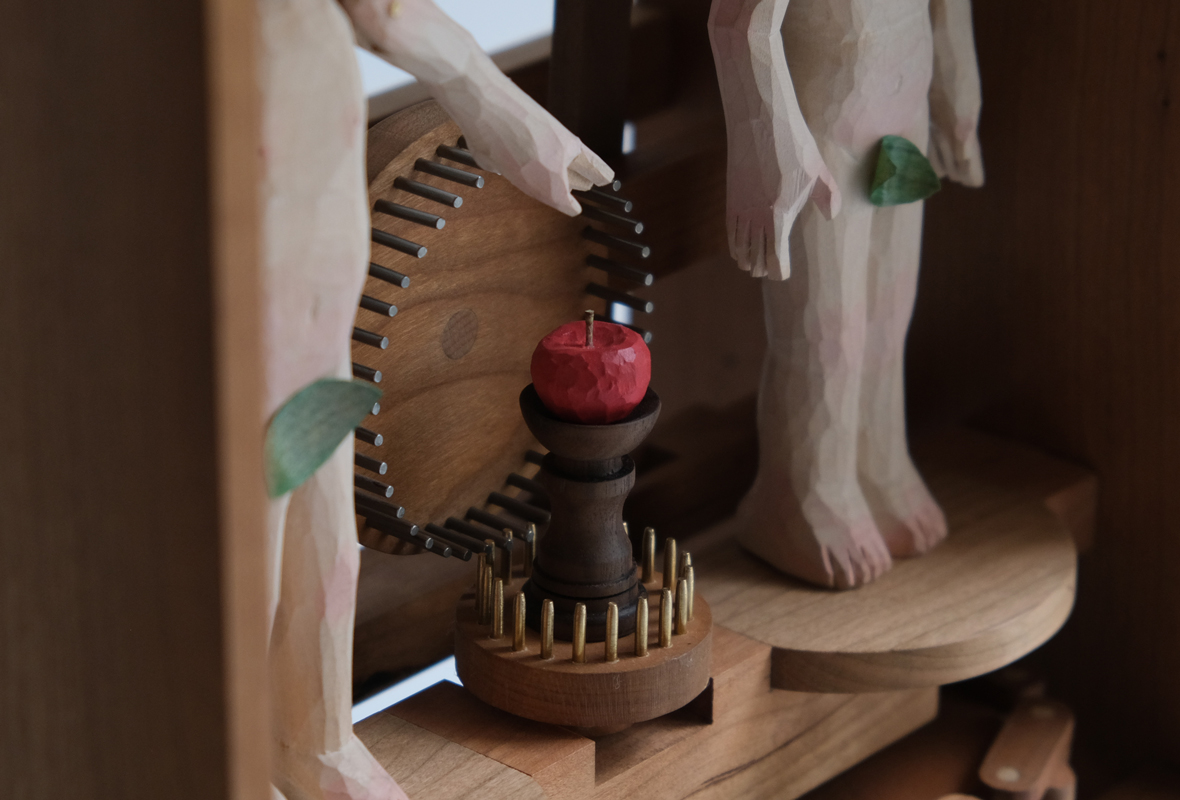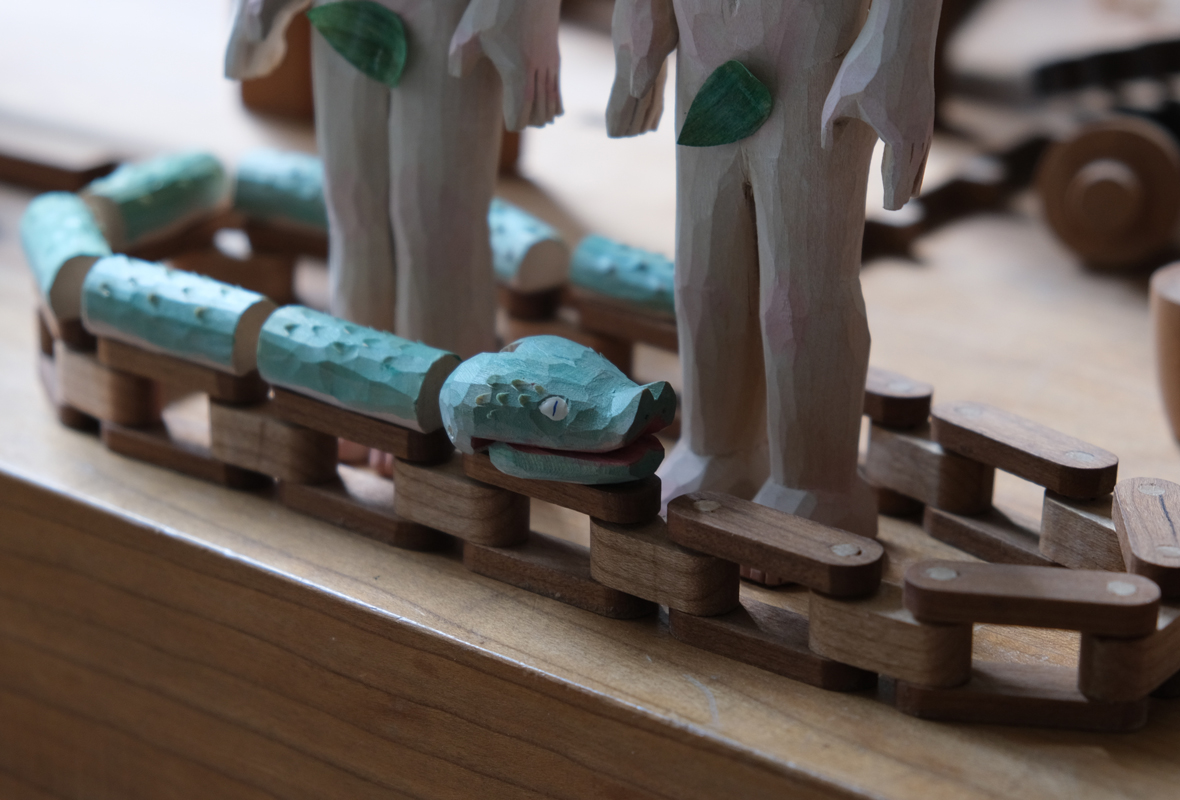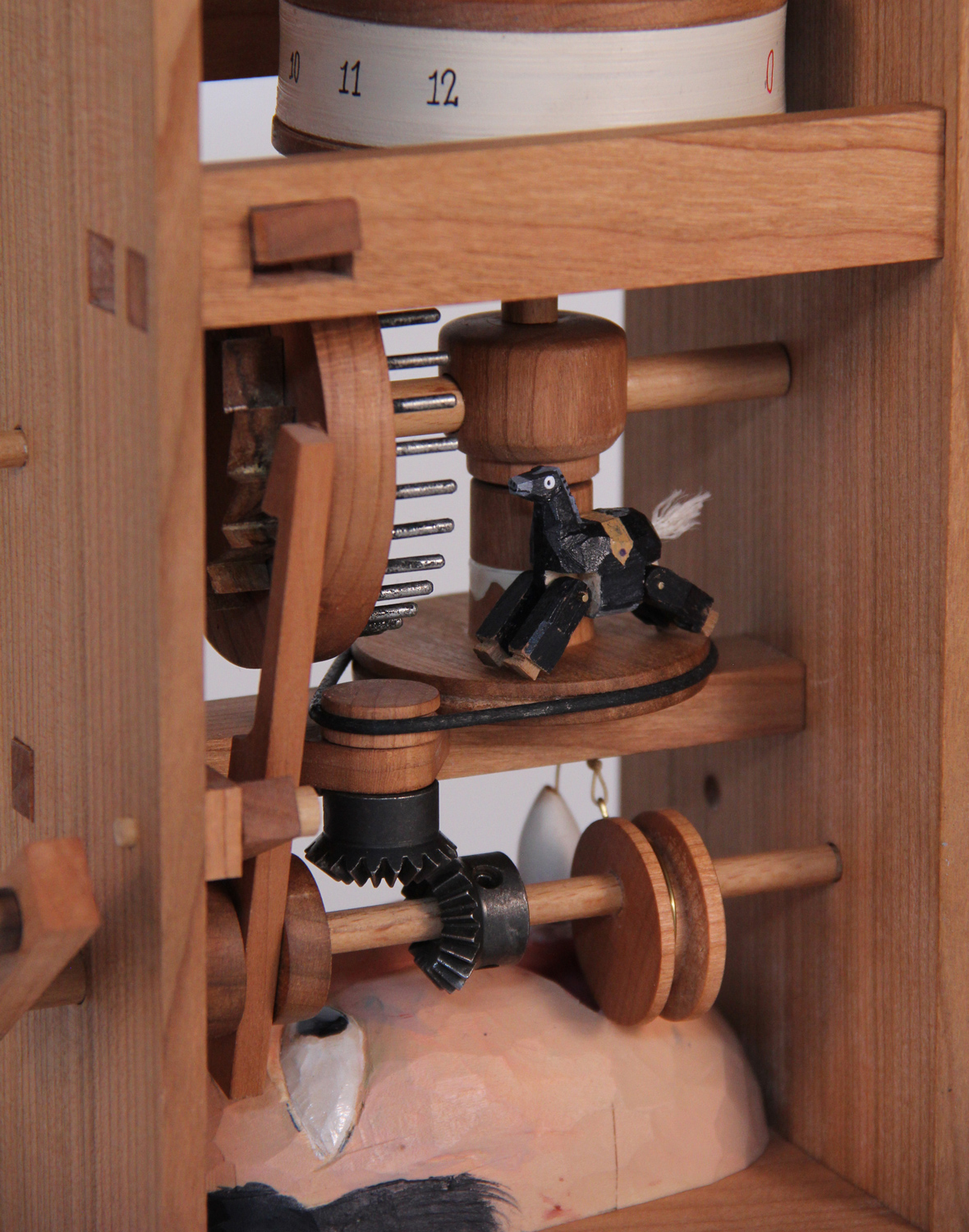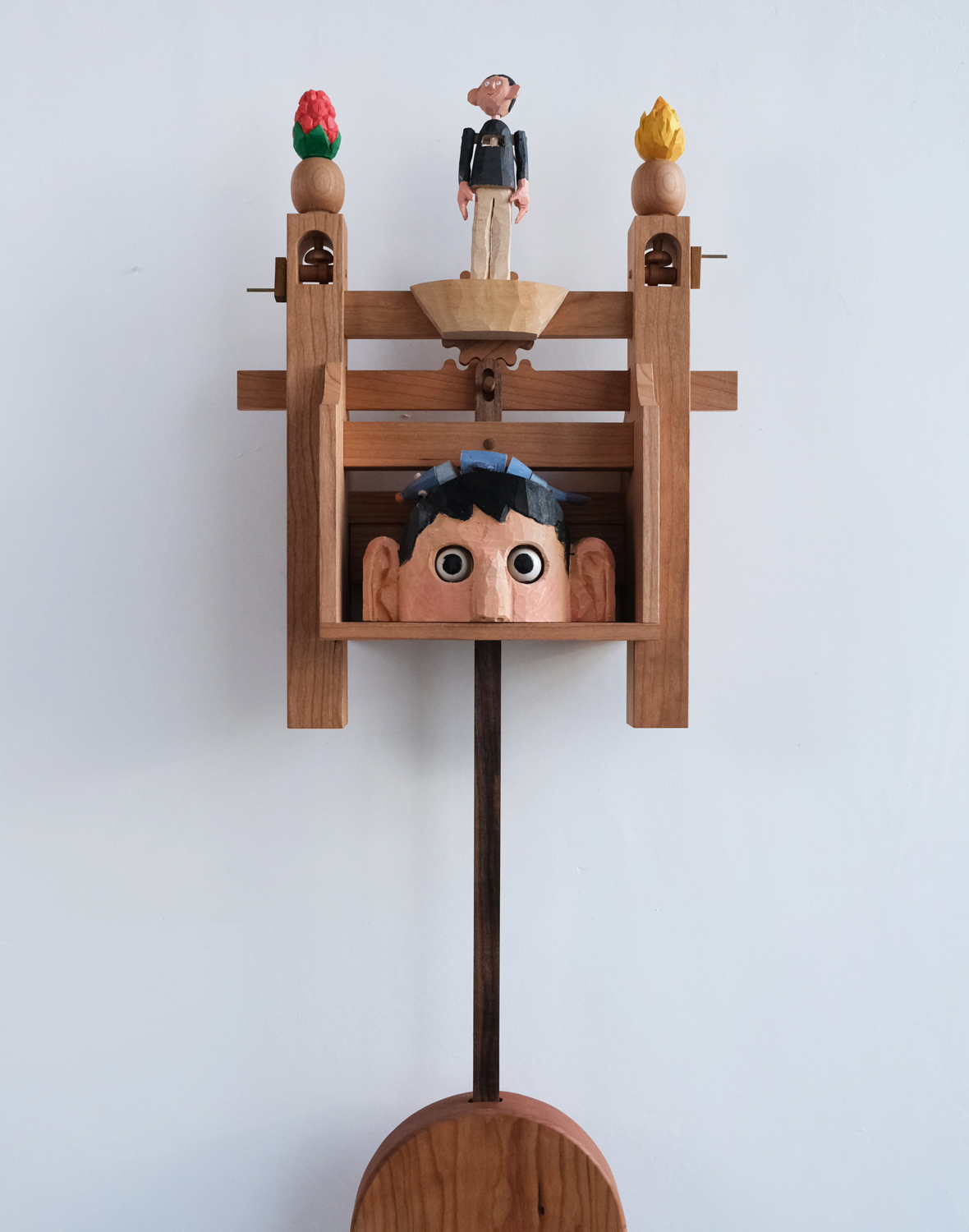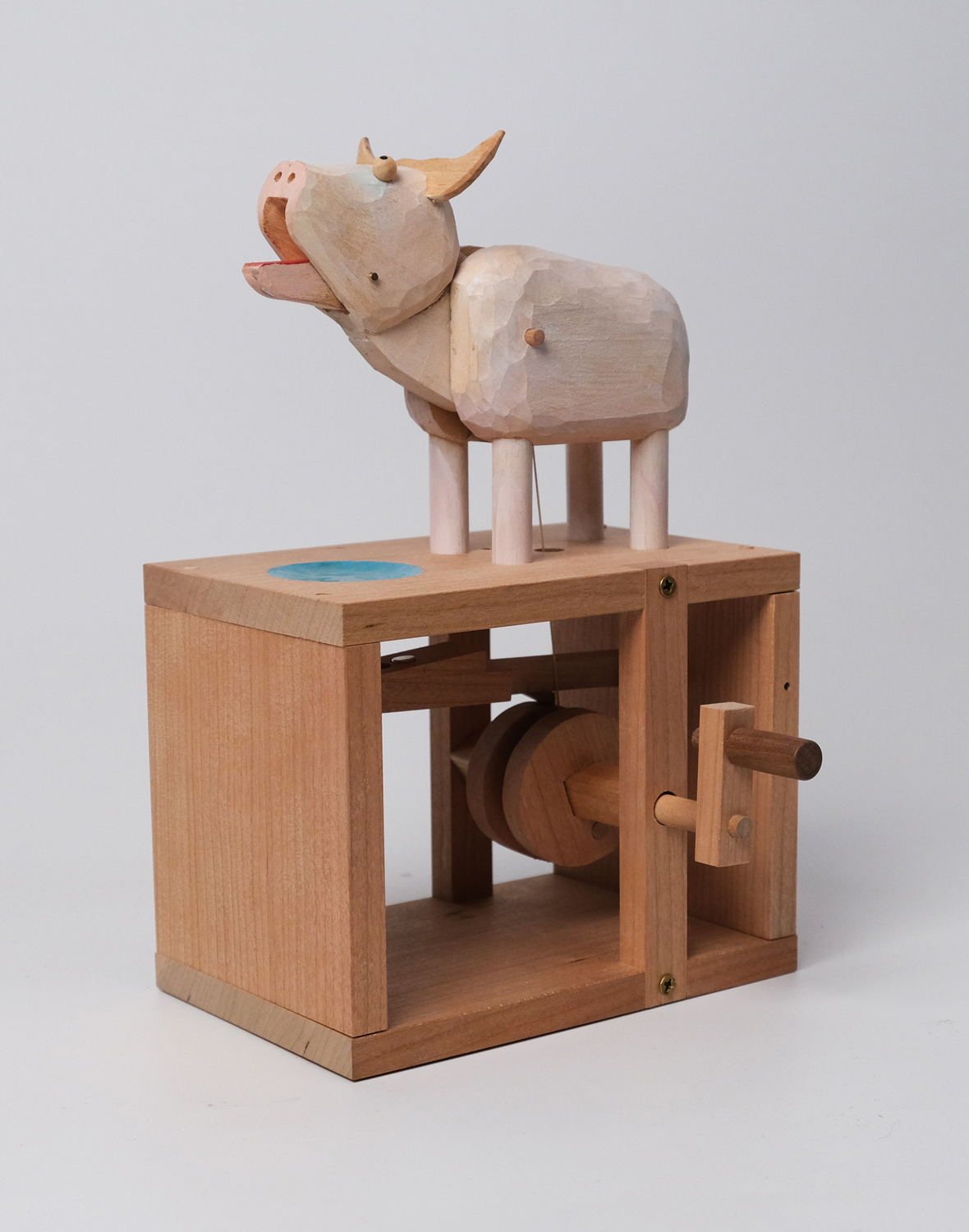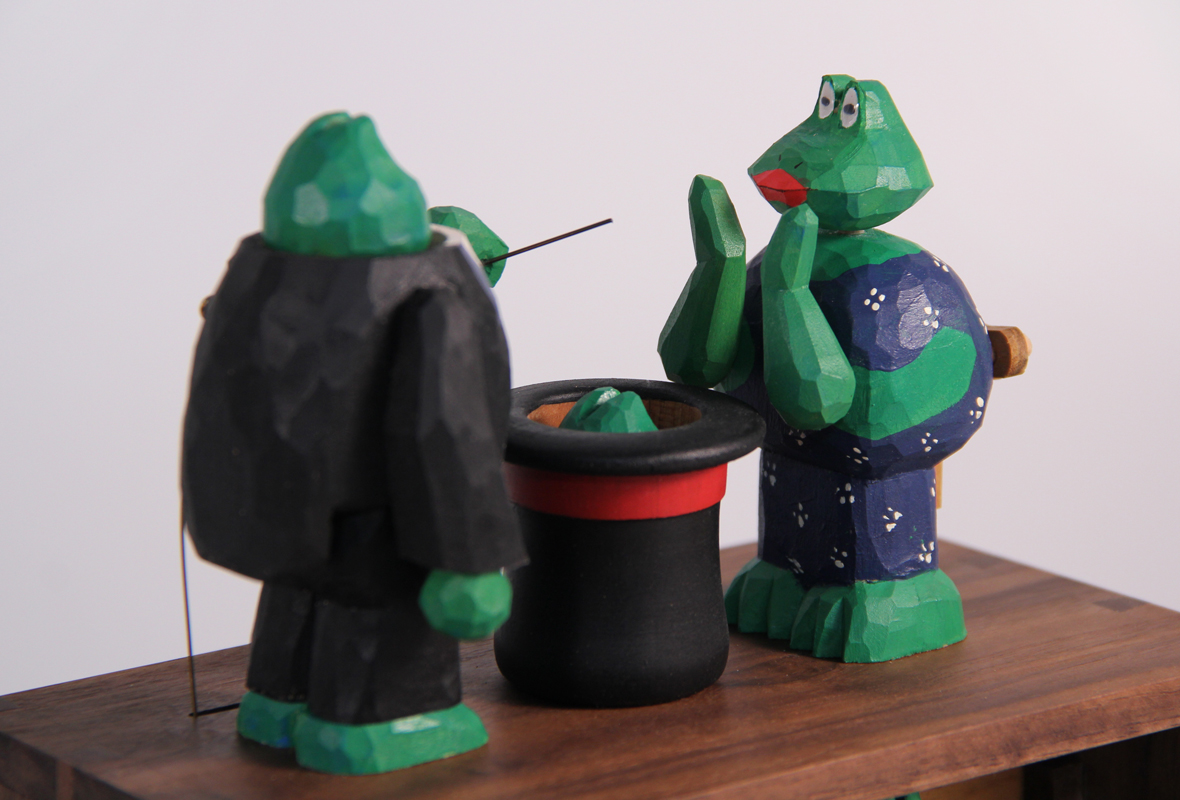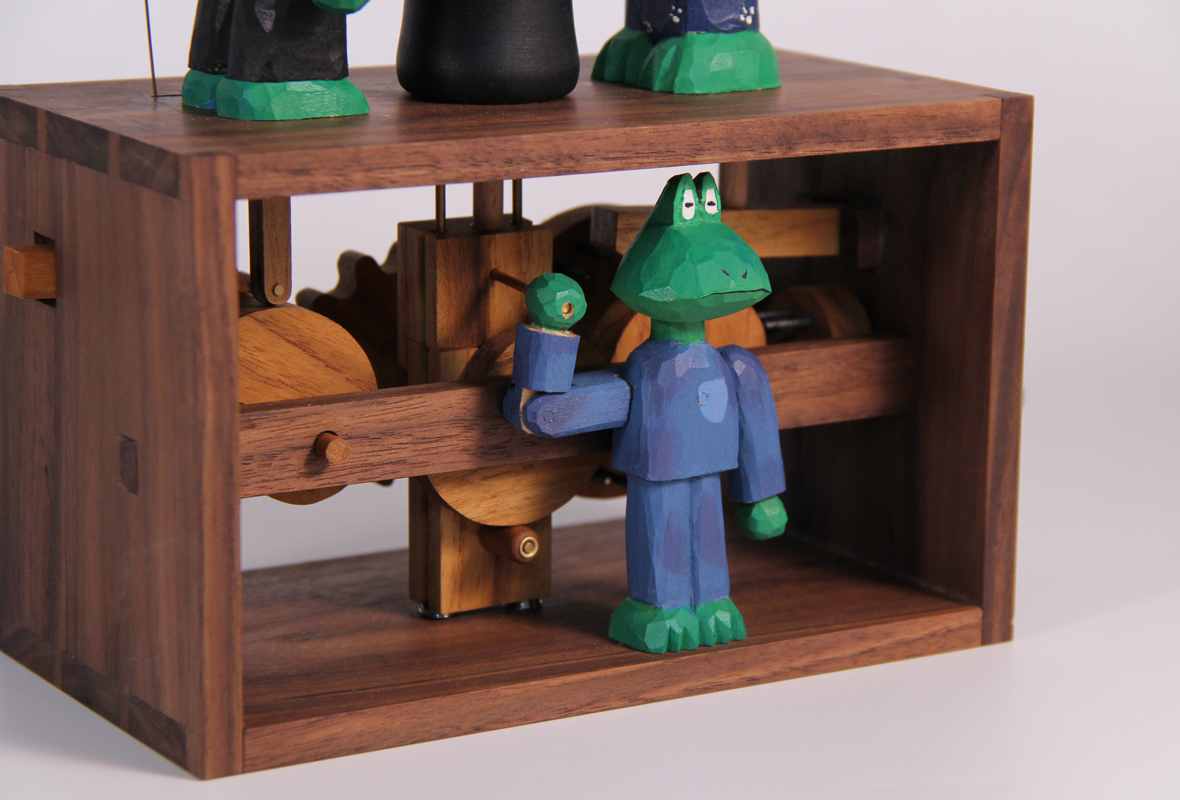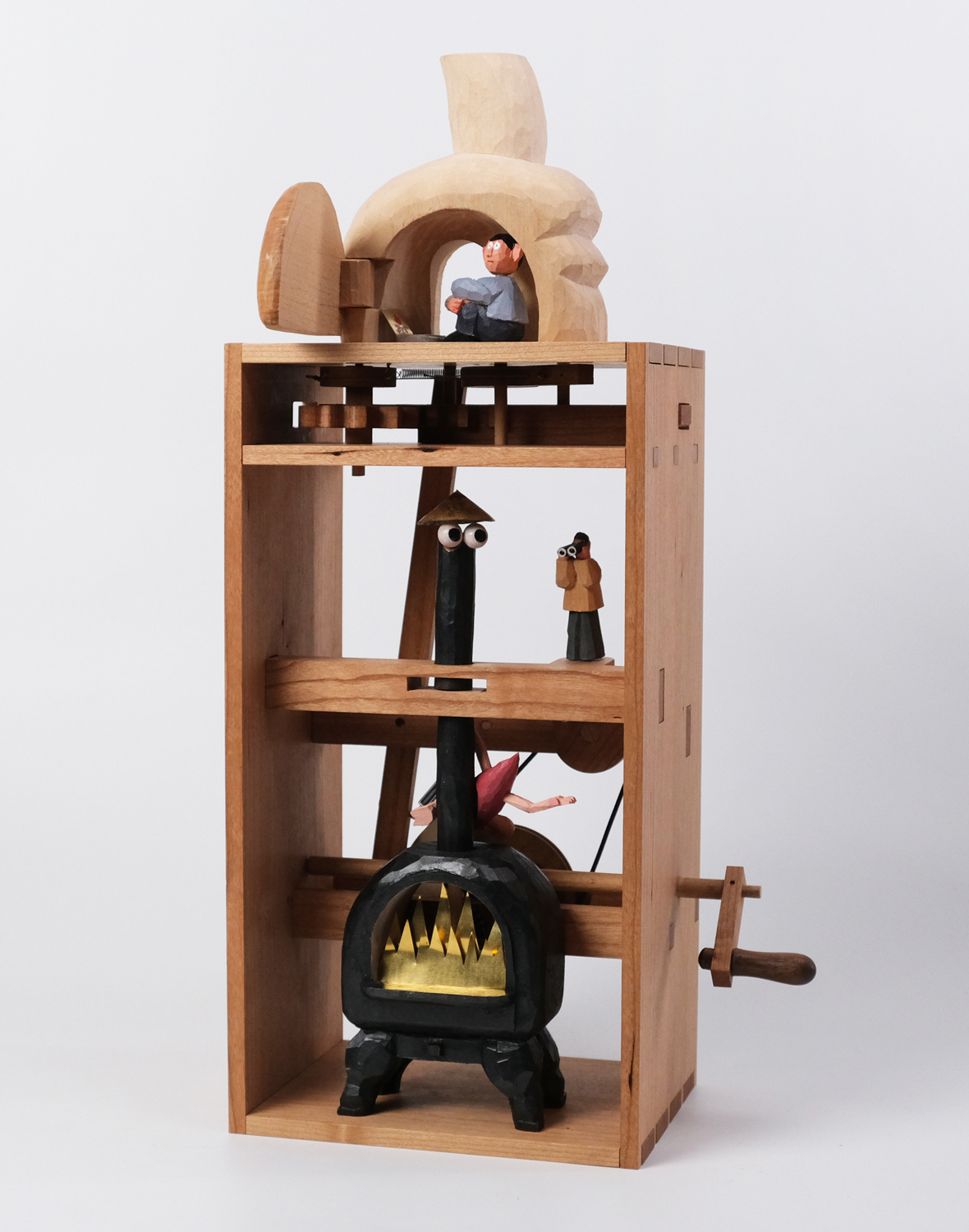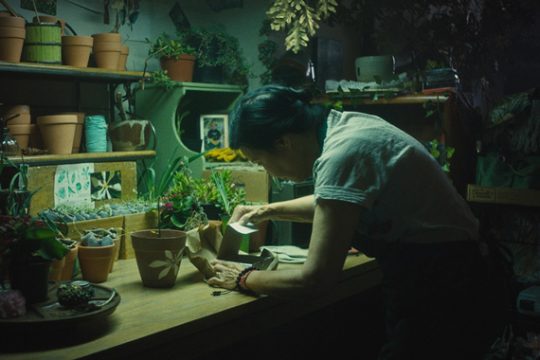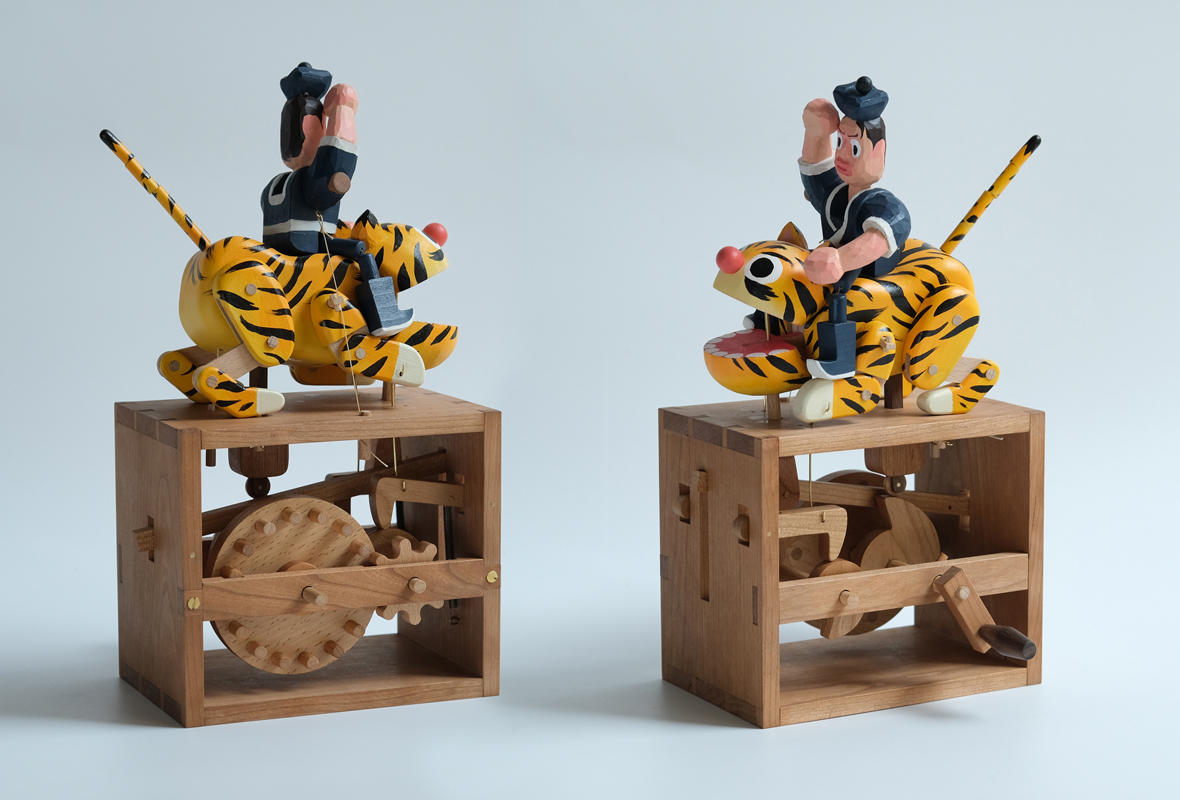
The interests that captivated our childhood imagination may seem a bit trivial nowadays. Most of our waking moments as adults are spent within the routines and humdrum of the rat race. This isn’t quite the case for Yu Chenrui, a Chengdu-born artist.
For as long as he can remember, Yu has loved getting involved with hands-on creative activities. As a kid, he’d even pluck loose strands off of the straw mats at home and reassemble them into the likeness of various animals. In school, he was captivated by arts and crafts classes where he cemented his love for handmade knickknacks. This affinity for handicraft stuck around into his college years, where he stumbled upon automatons—mechanical objects that can operate with relative independence once set in motion. In all of China, there are probably less than ten artisans dabbling with these kinetic objects. Even outside of the Middle Kingdom though, it’s not a particularly popular medium.
按部就班的人生,总有少数人能将童年的兴趣一直延续下来,对于 92 年出生的成都人俞宸睿来说,这门兴趣便是手工。他小时候就是个善于动手的孩子,从凉席上扯下的席草编织成直立的动物,到手工课上班里的活跃分子,凭借想象力与无处安放的双手自制关于童年的乐趣。长大后,他依然坚持这份与生俱来的创造力,并选择了一份极其冷门的职业:机巧装置(Automata)。据他所说,这门手艺的职业匠人在全国不超过十位,哪怕放眼全球,知名艺术家也屈指可数。而他本人,或许是成都唯一可以称得上是机巧装置艺术家的人。
无法观看?前往微博
Items such as mechanical watches, crankshaft musical boxes, or wind-up toys are probably the most commonly known automatons. But this mechanical craft stretches much farther back in history, with mentions in Greek mythology and even a period of renewed interest during the Renaissance. Early iterations of cuckoo clocks, mechanized fountains, and clockwork puppets have captivated the imagination of people throughout the decades. The evolution of these mechanical objects are a testament to human ingenuity, and in a way, markers of technological progress. Today, many of these earlier mechanical designs reside only in museums, and only a niche few remain interested in creating automata.
提到机巧装置、或是机关人偶,你或许能在生活中联想到古早的钟表、八音盒以及吓人玩具等等。但其实这是一门古老的艺术,通过机械传动原理,让“角色”运转,使情景展开。古往今来,机巧装置在世界东西方都有不同程度的发展。在古希腊的很多故事里,就有关于雕像会动的描述、欧洲文艺复兴和巴洛克时代,各式各样的机械钟上的小人、恶作剧喷泉等等装置层出不穷、以及曾在日本江户时代风靡一时的机关人偶等等,这些都展现人类对于机械装置的崇拜和幻想,映证技术与思维的进步。表面是关于机械原理、机械之美,而一个个齿轮和连杆又转动了多少生活的趣味,是理性与感性的结合。现在,许多机巧装置被存放于博物馆中,论起制作——已属于一个十分小众的领域。
In 2015, Yu was studying graphic design at the Communication University of China. At an elective woodworking course, he learned about the existence of automatons and was hooked. The lack of Chinese-language resources on the craft meant a lot of trial and error, as well as online research on Western sites. He even decided that his thesis paper would be dedicated towards the lesser-recognized craft. A background in motion graphic design meant that he had a better understanding of the expressive capabilities of movement, which still applies to the primarily wooden material he now works with. Since 2015, he’s created more than sixty pieces of original automata.
俞宸睿第一次接触这门艺术是在 2015 年,当时他正在中国传媒大学攻读平面设计专业。一次木工选修课程的课后调研,让他与机巧装置结缘。兴趣使然,他很快投入尝试。由于国内在这方面教育资源稀缺,一切全凭他无师自通。他于网络翻看大量作品和视频资料,将所能查到的统统收入囊中。两年后,俞宸睿以他对机巧装置的研究作为论文课题,伴随知识的梳理和掌握,这段经历对他日后的创作提供了极大的帮助。虽是动态图形设计专业出身,但他承认动画与机巧装置的一脉相通,“动画的背景让我更好地表达出生动的动作,只是现在创作动画的媒介变成了木头装置而已,”他说道。从 2015 年到现在,他已创作了六十余件机巧装置作品。
无法观看?前往微博
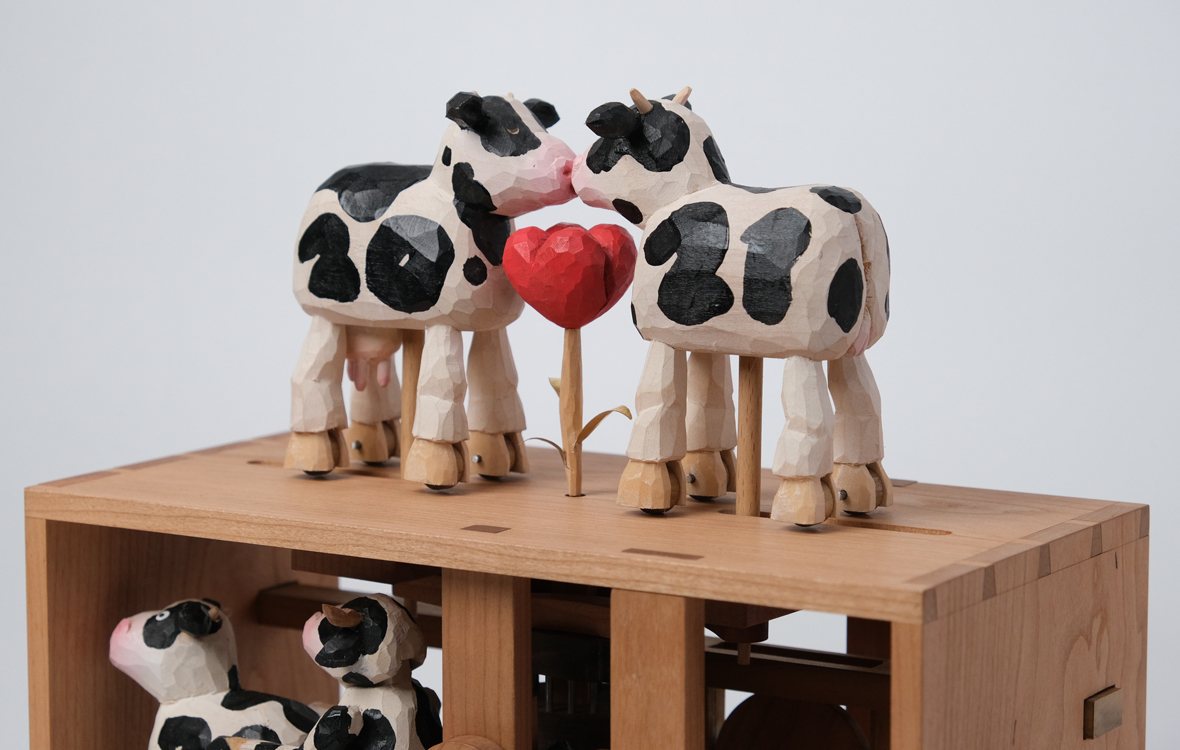
Most of Yu’s works are either based on myths or the minutia of everyday life. For example, Tofu Counter, a piece inspired by a traditional tofu shop right next to his studio. The piece replicates traditional tofu making process with fidelity, and at the bottom of it is a person with their mouth wide open, ready to gobble up a piece of delicious tofu.
A newer piece, titled Forbidden Fruit Plate, is based on the story of Adam and Eve. As the crank is turned, the two characters take turns reaching out toward the apple as they take furtive glances towards one another. It’s unclear whether they’re too shy to hold hands or are tempted to take a bite of the apple for themselves. It’s left open-ended, up for viewers to decide for themselves.
Humor is essential to his automatons. He believes that eliciting a laugh is the best way for audiences to connect with his work. “I believe that life is ultimately made up of a string of seemingly trivial things,” he says. “Some things may seem boring at first glance, but it’s still a part of life, and I enjoy taking it all in.”
The ability to set aside time for soaking in and appreciating life’s trivialities is perhaps something embedded in Chengdu’s way of life. Yu believes the city has been tremendously influential to his creative endeavors, and there’s nothing he enjoys more than strolling through the streets and seeing what the surroundings to offer. “Whether it’s the city or nature, I love Chengdu for its laidback vibes,” he says. “It helps me stay relaxed, and when I’m relaxed, it’s much easier to pepper my work with a dose of humor.”
俞宸睿的作品大都没有宏观的叙事,反倒是从生活中细碎的感悟和观察、或是流传于民间短小精悍的典故中得来。例如作品《豆腐计数器》,其灵感来源于俞宸睿工作室旁边的一家传统豆腐磨坊,他在创作中保留了对传统豆腐制作流程的记录,以此来表达对这门工艺的致敬;而这类手工豆腐价格通常高出普通豆腐,作品中加入的计数器装置来表达一种精打细算的生活态度,上方显示的数字“12”则表示他在豆腐店一次充值可购买的次数。他今年完成的作品《禁果盛放器》,则取材自亚当和夏娃的故事,随着装置的转动,两位角色向彼此伸出双手,随之旋转的还有头顶的“禁果”;是牵手成功,还是偷吃并承担后果,他将一个开放式话题留给观众。
这种冷笑话、幽默的方式在俞宸睿的每一幅作品中体现,他渴望通过这些作品与观众进行互动,“我始终相信,我们真实的生活就是由这些琐碎事物组合而成。有些在旁人眼中或许是百无聊赖,但这就是生活,我喜欢观察这些,” 他说道。从生活中来,到生活中去,这样的创作理念恐怕在与成都这座城市“自由散漫”的性格彼此呼应。闲暇之余,俞宸睿最爱在城市里游荡,而灵感往往也正是在此刻发生。他说:“我喜欢穿梭在市井、城市和自然,舒服的生活节奏让我更容易放松,放松就能多讲点冷笑话在作品里。”
无法观看?前往微博
Creating one of these mechanical constructs can be incredibly tedious and time consuming. A lot of focus is required in seeing it through from start to end. Plenty of time is spent on experimentation and adjustments. From ideation, to early sketches, structural design, carving, coloring, and assembly, no single step of the process is more important or less important than the rest. It can take anywhere from a week to several months to fully complete an automaton. In assembly, Yu even employs mortise and tenon, a traditional Chinese carpentry and architectural technique in which components would be conjoined with interlocking fit and no additional fasteners.
而机巧装置的制作过程则容不得半点散漫,在俞宸睿看来,这类创作往往是一个漫长且枯燥的过程,需要反复调校和试错。从想法、草图、结构制作、雕刻、上色、再到组装,每一个环节都不容忽视。仔细观看这些作品的构造,你会发现中国传统木工艺术中榫卯工艺的运用;而从角色和动作的设计来看,还散发着早期上海美术电影制片厂的味道。这些都需要精心打磨。
Ji qiao is a unique Chinese term that can be roughly translated as “mechanical ingenuity,” and its coinage can be traced back to the Warring States period. Yu believes this is the most apt way to describe his work—these methods of animating his designs isn’t something that can be replaced by modern methods of automation. “This ‘ingenuity’ is related to the maker’s emotional commitment, expressive intent, and design thinking, but it’s also the joy brought about through the creation process, the juxtaposition between the inanimate state and its dynamic state, plus all the surprises the artisan may hide within the piece.
Yu mostly works with cherry wood, seeing it as a material that can withstand, and even evolve, with the effects of time. “An automaton is a time capsule, and cherry wood will oxidize and change color with the passage of time—the longer the piece lasts, the deeper the color of the wood becomes.”
有时候,一幅作品的创作周期小到一周大到几个月。这其中,俞宸睿最看重装置中“机巧”概念的塑造,通俗一点,便是赋予机械生命。因此,普通的机械原理显然是行不通的。他解释说:“机巧装置玩得就是‘巧劲儿’,其包含了创作者对作品的情感投入、个人表达和巧妙设计,同时也包含原始结构带来的意外之喜。作品静止和动态带来的强烈反差、作者暗藏在时间轴的惊喜,这些都是机巧的体现。” 为了表达“时间”这个概念,他在创作中有自己的木材使用偏好,“机巧装置是时间的匣子,而樱桃木会随着时间的流逝,氧化变色,时间越长颜色越深红有韵味,”他说道。
无法观看?前往微博
For Yu, his creative process and everyday life go hand in hand. Through his creations, he’s found that an appreciation towards the whimsies of life through a new perspective. In fact, the moving gears of his automatons can be seen as a metaphor for life—it’s self-powered, sometimes perhaps moving a bit too fast, but once slowed down a bit, the details are breathtaking. It’s a philosophy that’s left an impact on him. “Slow is the new fast,” he says. “Creating an automaton is tedious work, but even if there is a new piece that I really want to finish I’ll take my time to iron out every detail to the fullest extent. That way, it not only meets my personal standards, but is able to stand the test of time. To me, life is the same, I believe that if you live each day to the fullest and keep an open mind to all it has to offer, you won’t live with any regrets.”
从生活到创作,再从作品为生活平添的那份惊喜,俞宸睿的机巧装置是生活与创作的双向奔赴,让观众猛然间放下戒备,沉浸当下的快乐。当时光渐渐流失,生活中的趣味却从未褪色,这些都随他的作品保留下来。对于他来说,生活就像是装置中的齿轮,好像永远不会停歇,但转得太快,容易错过许多美丽风景,慢下来反而更能留意到更多细节。这些年的创作,让俞宸睿对于生活也有了新的感悟,他说道:“慢就是快,机巧装置的创作过程是繁复的,即便有很想要完成的新作品,还是要慢慢进行,照顾处理好每细节,这样组合成的作品才能打动自己和经受得住时间的考验。生活也是一样,过好每一天,这个月就不会太差。”
Like our stories? Follow us on Facebook and Instagram.
Weibo: @chenrui_yu
Instagram: @yuchenrui_automata
Contributor: Pete Zhang

